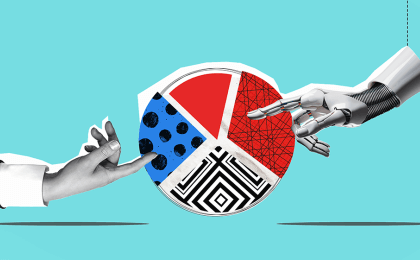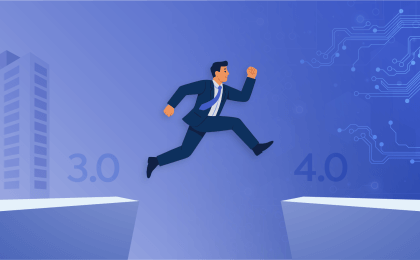(This article originally appeared on HR Morning.)
When hiring managers set out to fill a vacancy, they’re often thinking of all the characteristics they’d like to identify in a new hire: hard-working, intelligent, capable of productive collaboration with other employees and so on.
However, in their search for the right candidate, companies also have to actively avoid choosing the wrong candidate. Doing so can have a serious negative impact on employee morale, productivity and many other aspects of the business.
Still, as harmful as bad hires can be, they’re unavoidable. Even the most effective hiring processes will occasionally fail to identify potential issues with a candidate that will manifest themselves later, because like most things that involve predicting the future, no system is perfect. (This is why you should be wary of hiring platforms or vendors that make promises like “never make a bad hire again;” that is not how the science of prediction works!)
While the costs of hiring mistakes are real and no company wants to absorb them, bad hires also present a unique opportunity to evaluate your hiring process and make adjustments as needed. Given the inevitability of bad hiring decisions, companies should approach each failure with an open mind and a willingness to take a hard look at the evidence.
When hiring managers are able to determine why an employee didn’t work out, they can develop more rigorous mechanisms for filtering out bad hires (and by extension, identifying candidates who will be a great fit). This won’t just prevent them from investing in the wrong people – it will help them create a healthier work environment for everyone.
Cost of a bad hire
When companies consider the financial impact of a bad hire, they have to take many factors into account – from recruitment, onboarding, and relocation expenses to project disruption, decreased employee morale, and many costs that aren’t easy to quantify.
The consequences of hiring the wrong person vary drastically for different companies, situations and employees. For example, while some companies just have to deal with logistical costs and inconvenience, others may lose customers or suffer long-term reputational damage.
According to research from Gallup, American businesses lose more than $1 trillion every year due to voluntary turnover alone. Meanwhile, ADP reports that the monthly turnover rate in the U.S. was 3.2% in 2019 – a substantial proportion of the total workforce over the course of a year.
The vast majority of companies say they’ve hired the wrong person at some point, which is why hiring managers need to be cognizant of the full range of risks associated with these mistakes – especially when the roles they’re hiring for are training-intensive, critical to the completion of a time-sensitive project or high-stakes in some other way.
But whenever companies do make that unavoidable bad hire, they should treat it as a learning opportunity. This means they have to figure out why the employee wasn’t a good fit, take a look at the potential errors or oversights that led to the hiring decision and develop a more consistent and predictive process for identifying talent.
What went wrong?
Before a company can learn from a hiring mistake, it has to determine why the employee fell short. According to a Harris Poll survey conducted for CareerBuilder, the top three reasons for regarding an employee as a bad hire are: low quality of work, a negative attitude and an inability to work well with other employees.
The survey also asked employers to explain why they made the wrong call on a hire, and the top two reasons were: a mistaken assumption that the candidate could learn the necessary skills quickly and dishonesty about qualifications.
Different jobs have different requirements – if a position demands creative problem-solving skills, hiring managers should pay particularly close attention to whether or not a new hire is analytical, curious and intelligent.
Similarly, if a job is customer-facing or requires frequent collaboration with colleagues, managers should be looking out for signs of emotional intelligence (or a lack thereof).
After an employee’s departure, whether voluntary or involuntary, companies should reflect on his or her performance in these key areas. Doing so will help them determine what they need to look for in the next candidate, as well as what they should avoid.
Don’t make same mistake twice
Companies often think they have to gamble with certain elements of a candidate’s application – although hiring managers can discover what skills and experience candidates claim to have on a resume or in an interview, they assume they just have to take these claims on faith.
The same goes for characteristics like work ethic, cognitive ability and emotional intelligence – these are among the most important traits any employee can have, and many hiring managers discover that a new employee lacks one or all of them far too late.
Recall that the two most frequently-cited mistakes hiring managers report are: assuming a candidate could learn necessary skills quickly and the failure to determine whether candidates are being honest about their qualifications.
These are both reasons why it’s no surprise that hiring managers are particularly focused on soft skills – not only are skills like emotional intelligence, conscientiousness and cognitive ability highly predictive of job success, but the ability to identify them makes companies much less reliant on resumes and other forms of self-reporting (which can be inflated or even fabricated).
Companies no longer have to guess whether a new hire has these skills and characteristics. Tools like pre-employment assessments can identify them with greater accuracy than ever before, and these tools can be applied based on what companies learn from bad hires.
While it’s essential to avoid bad hires, sometimes this simply isn’t possible – hiring is what game theorists would call a partial information game — there is no way we can know everything about a candidate’s job-related abilities before a hiring decision.
But by gathering the best possible information on a candidate to inform a hiring decision, and diagnosing what went wrong when hires don’t work out, companies can consistently improve their “batting averages” when it comes to hiring.





